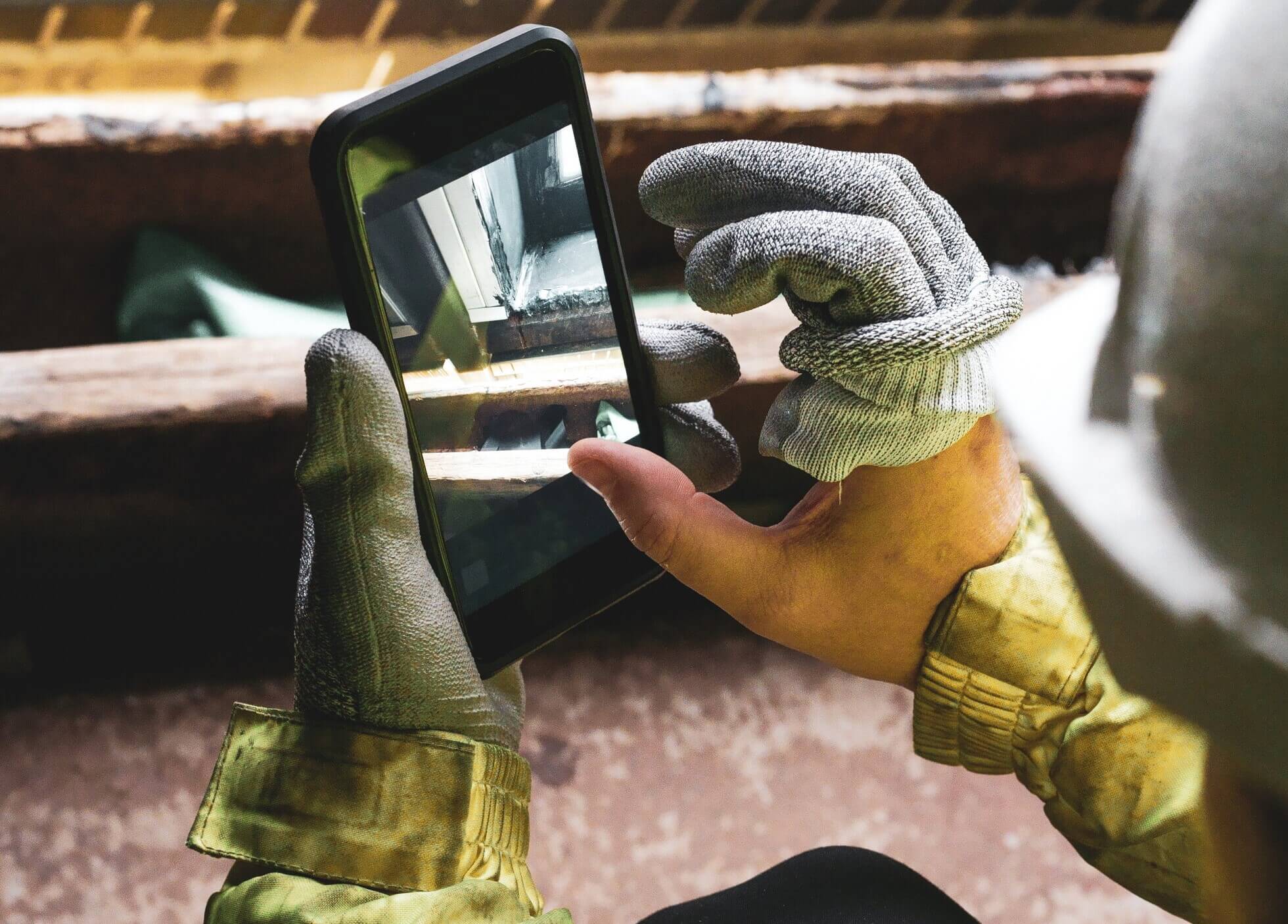
This guide will show you how to connect your computerized maintenance management system (CMMS) with the other platforms and software that your business relies on so you can collect more data, trigger the right action, and optimize your maintenance processes. The CMMS integrations you'll discover include:
- SCADA, PLC, and other IoT devices (enabling remote and real-time monitoring of physical assets)
- Manufacturing execution systems (MES)
- ERP software
- Inventory management platforms
- Business intelligence (BI) software (and other financial, and business systems)
- Fleet telematics
You’ll also get an in-depth integration plan that walks you through the steps needed to integrate your CMMS with your business systems. By the end, you'll know how to use CMMS integrations to drive operational efficiency, improved asset performance, and better collaboration between maintenance and other departments.
Key takeaways
- Unifying the flow of data across production, inventory management, and finance will help you improve data accuracy and speed up decision-making.
- Start your CMMS integration program with the workflows that have the biggest impact on your day-to-day maintenance operations.
- If you are evaluating maintenance software for its integration capabilities, look for API integration features and proven partnerships to help you accelerate implementation.
- When creating a CMMS integration plan, start by scoping the requirements, establishing metrics, organizing your data, and piloting the integration.
What is CMMS integration?
A CMMS integration is a connection between maintenance software and another piece of software or technology that allows data to be automatically shared between the two systems. CMMS software is commonly integrated with:
- Enterprise resource planning (ERP) systems
- IoT and data historian tools, like SCADA and PLCs
- MES and EAM platforms
- Inventory management and fleet management systems
- Business intelligence software, like accounting systems
- Safety and compliance platforms
The goal of a CMMS integration is seamless coordination of maintenance processes, centralized data management, and real-time equipment data to support proactive maintenance, predictive maintenance, and condition based maintenance. Data flows automatically between these platforms, often enabled by application programming interfaces (APIs) that facilitate integration and real-time data exchange.
Types of CMMS integrations for maintenance management
The table below will help you assess which CMMS connections are best for your organizations and maintenance team goals, as well as which data to collect and how to use it in your maintenance software.
Pro tip: keep master data for assets and parts in one system and reference elsewhere. Duplicating master records are the number-one drag on data accuracy and overall efficiency.
How to integrate your CMMS
Below is a detailed implementation plan for CMMS integration based on industry best practices.
What you need before you start
- A business case: Pick 2–3 measurable targets that your implementation project will help improve. For example, mean time to repair (MTTR) or preventive maintenance compliance.
- A solid data foundation: Collect a single master asset and parts list, along with supporting data, such as standard failure codes and units of measurements.
- An outline of access and roles: Create a detailed plan for who will have access to which systems, what they will be able to do in each system, and how data quality will be preserved.
Choose your integration method
- Native connector: This option will give you the fastest start as it's a pre-built connection between two systems. However, native connectors aren't as common.
- Open API integration: Open APIs allow you to connect with a wider set of systems with more customization in how you set up the integration. However, open APIs aren't guaranteed and they often take more time and resources to build.
- iPaaS or middleware: This is a low-code option with many endpoints, which makes it good for quick wins, but not as good for long-term, enterprise-grade solutions.
- ETL (warehouse only): For history and analytics only, which makes it easier to set up, but prevents you from collecting data on real-time operations.
Map your fields
- Align asset IDs across PLCs, historians, and your CMMS.
- Normalize status codes (work order status, failure reasons) and cost codes.
- Decide authoritative systems (ex. ERP owns items and suppliers while CMMS owns work orders).
Build a pilot
- Pick one area of your operation that has the biggest impact on your day-to-day operations, like a bottleneck line. Find an integration point and solution that fits. For example, connecting Ignition with your CMMS.
- Set up your data sync and triggers within your CMMS. For example, if vibration on a component reaches over a certain threshold, a corrective work order is automatically scheduled in your CMMS.
- Close the loop by syncing data back into systems at predefined points during the day, whether that's every 10 minutes or twice a day.
- Train early adopters and capture feedback.
Test and adjust
- Review data quality: Is the right data being synced between systems at the right time? Are the systems still operating without errors, inconsistencies, or user confusion?
- Audit outputs and triggers: Ensure that every action or insight generated via the integration is accurate and processed correctly.
- Update guidelines, rules, and workflows: If errors are found, fix them to ensure the accurate flow of data into each system. Improve guidelines and workflows to boost what is already working.
Scale and optimize
- Roll to more lines and/or systems
- Turn on rule-based escalations
- Track KPI deltas
The future of CMMS integrations for asset management teams
The landscape of CMMS integration is rapidly evolving, with several trends set to redefine maintenance management in the coming years. Artificial intelligence (AI) and machine learning (ML) are increasingly being used to analyze maintenance data, enabling predictive maintenance strategies that anticipate equipment failures before they occur. The proliferation of IoT devices and sensors is providing maintenance teams with real time equipment data, further enhancing asset performance and supporting data-driven decision making.
Integration between computerized maintenance management systems and other enterprise software, especially ERP and other enterprise asset management systems, is becoming more seamless, creating a unified ecosystem for managing maintenance operations, maintenance tasks, inventory, and financials. Cloud-based CMMS solutions and mobile devices are making advanced reporting and analytics accessible from anywhere, empowering organizations to optimize resource utilization and reduce costs. As regulatory compliance requirements grow more complex, integrated systems will also play a crucial role in ensuring accurate record-keeping and audit readiness.
By embracing these trends, like AI-driven insights, IoT integration, ERP connectivity, mobile access, and advanced analytics, organizations can future-proof their maintenance management, drive operational excellence, and stay ahead in a competitive landscape.
Connected systems, people, and data are the recipe for asset management success
A high-performing maintenance and asset management organization runs on connected data. Tie your CMMS to ERP for accurate cost control; to SCADA/PLCs and IoT for real-time triggers; to BI for decision-ready reports; and to fleet/BMS for coverage beyond the line. Start with one line and one workflow, prove measurable wins, then scale with confidence—on a secure foundation.
CMMS integration FAQs
Can IoT solutions integrate with mobile maintenance management apps for field technicians?
Yes, many IoT solutions integrate with mobile maintenance management apps like MaintainX. This integration lets field technicians receive real-time data and alerts on their mobile devices.
É fácil integrar o MaintainX com sistemas existentes?
Sim. O MaintainX foi desenvolvido com flexibilidade para se integrar a diversos sensores e plataformas de monitoramento em tempo real. Consulte o marketplace de integrações da plataforma para descobrir opções prontas e personalizáveis de parceiros como MachineMetrics e SAP.
O software de gestão de instalações pode integrar-se a sistemas existentes?
Sim, os softwares modernos de gestão de instalações podem se integrar com os sistemas comumente utilizados por instituições de ensino. O MaintainX oferece integrações personalizáveis que permitem o fluxo contínuo de dados entre os departamentos, melhorando a tomada de decisões e a eficiência, além de eliminar silos e a inserção redundante de informações.
O software de ordens de serviço pode ser integrado aos sistemas existentes de uma organização?
Muitas opções de software de ordens de serviço oferecem integração com sistemas como ERP, CMMS, softwares contábeis e plataformas de gestão de ativos. Essa integração melhora o fluxo de dados e garante comunicação eficiente entre diferentes departamentos.



